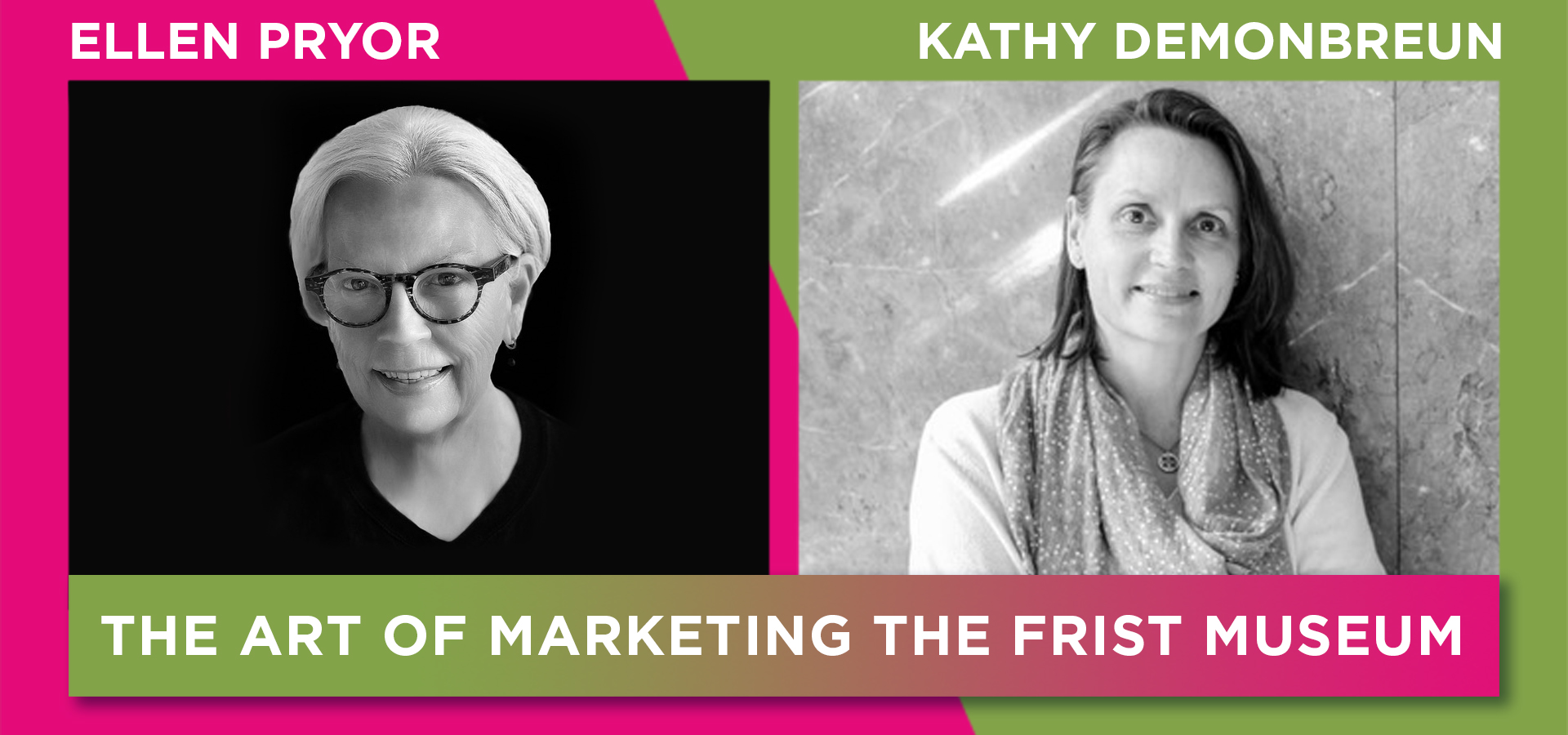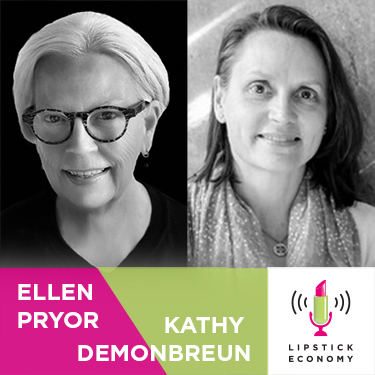Ellen Pryor and Kathy Demonbreun
The Art of Marketing The Frist Museum
We had a great conversation with Ellen Pryor and Kathy Demonbreun from the Frist Art Museum. Ellen is the Director of Communications and Kathy is the Marketing Director for the Nashville-based museum. Both of these professionals have been with the museum since its opening 20 years ago. And now the anniversary is being celebrated with an exclusive U.S. appearance of Picasso. Figures at the Frist now. The exhibition features approximately 75 paintings, works on paper and sculptures.
What should we know about Ellen Pryor and Kathy Demonbreun?
Ellen and Kathy have been part of the Frist since before the museum opened.
Ellen Pryor serves as Director of Communications and Community Relations at the Frist Art Museum. She is a trustee of the National Academy of Television Arts and Sciences, serves on the board of directors of the Nashville Convention and Visitors Corporation, the Keyboard of the Blair School of Music at Vanderbilt University, the board of directors of the Lane Motor Museum and is a member of the advisory board of WFSK-FM at Fisk University.
Kathy’s primary responsibilities include managing the traditional and digital advertising efforts and promotional planning for the museum including creating customized marketing campaigns to promote the museum’s ever-changing exhibitions. She also serves as the webmaster for the institution. Kathy has had a rich background in entertainment marketing with Gaylord (now Ryman Hospitality) and working with PR and advertising firms.
Tell us what the vision for the museum was and how it has evolved in the past 20 years.
When we started out, Ken Roberts and Dr. Thomas F. Frist, Jr. envisioned a visual arts center that would bring the art of the world to Nashville. The museum is housed in the city’s historic U. S. Post Office building, listed on the National Register of Historic Places. Dr. Frist recognized that not everyone had the opportunity to have art education or to travel the world to see art. There was a desire to bring art to Nashville that would inspire and educate.
One of the things that sets the Frist apart from other museums is the absence of a permanent collection. What does that mean for exhibitions? And how does that affect your marketing?
It is wonderful since we have a fresh message every couple of months, changing 9-10 exhibitions a year. Some are large like Picasso and some are locally oriented. We welcome visitors from around the world, but visitors in our area can come frequently and will see new exhibits all the time. It allows us to reach out to different audiences. Not only do our exhibitions change but our education and programs change based on the exhibitions. It’s a marketer’s dream.
What are some of the major exhibits that have been important to the growth of the Frist audience?
People like to see what they like and know. Egyptian exhibitions are always popular. We have had two Egypt exhibitions. The first exhibition that propelled us was the Phillips Collection. This was in 2004. It was El Greco to Picasso and included European masterworks. People came streaming into the museum. More than 196,000 people viewed the exhibition. For many it was the first time they had seen paintings like Renoir’s famous impressionist painting Luncheon of the Boating Party somewhere other than a book.
Some of our smaller and contemporary exhibits have also been eye-opening. There is a growing appreciation of contemporary art.
The others are the work of school children, maybe some of the most important exhibitions that we do. Many times their work is being displayed at the same time as a Rembrandt or a Picasso.
The big blockbusters have gotten people in the door for the first time and they have seen that the Frist is approachable and broadened their art appreciation of other types of art.
Who is the museum attendee today? What are ways you are reaching new audiences such as the young and more diverse attendees?
The museum attendee is a person who is curious and enjoys learning. We certainly have our core audience who wants to see what is new at the Frist. And we have our members who are so loyal and continue to sustain us. We tend to skew female like most of the arts but we welcome all.
Our attendance has continued to grow because of new people moving to Nashville who may have come from larger cities where they enjoyed attending museums. We have special member categories and programs for younger people.
We reach out to diverse audiences based on the exhibit. We have a community engagement council that we work with to reach out to all kinds of audiences. We have advisory councils for some exhibits to help us better understand a certain culture and a certain demographic. When we work with smaller communities it helps us to spread the word and learn the best way to present the work. We also have 70 partner organizations in the area that have helped us reach diverse audiences and be accessible to all types of audiences. Accessibility is more than just physical; it is economic, emotional and more.
How does the Frist compete with so many other forms of entertainment in Nashville, such as sports and music?
We don’t try to compete. We are stronger together. We partner with every museum in town. We try to put together offerings that are unique to us like marrying music and art, or dance and art. We work with the Symphony, theater groups, the museums and other cultural attractions. We are all part of the fabric of the city.
We are thrilled to have the new National Museum of African American Music just down the street from us and you will see us partner in the future.
How does the Frist market each major exhibition?
It starts early on from scratch. We have presentations by our curators and we begin to brainstorm programs and tools we will provide related to the exhibition. Closer, we develop a design and brand with every exhibition. There are so many nuances with exhibiting major art works.
The media we use includes all kinds, both print and digital, radio and outdoor, within our community. Outdoor continues to be a strong part of our marketing plan. It’s so large, visual, flexible and doesn’t discriminate in any way. Everyone can see it, both locals and visitors. We love digital boards because it allows us to put up more than one exhibition at the same time. We also have great publicity locally, regionally and beyond because our exhibits change so frequently.
What is the scope of The Frist for exhibitions?
The Frist exhibitions have encompassed clothing, automobiles, home goods and more. Design is part of the artistic impression. You can’t leave an exhibition like Manuel or the exhibition of Italian cars without a new appreciation for their construction and form and function. These types of exhibitions also grow our audience with those who may not have been a museum visitor.
There seems to be a conversation in the art world about women artists and diverse cultures being represented in exhibitions and in management of museums. How does the Frist approach those issues?
We look at our exhibitions with an eye to balance to gender, ethnicity and diversity. We have had great exhibitions of work by women like Nashville’s own Marilyn Murphy and Alicia Henry, and have new ones in the planning right now. Our own executive director and CEO, Susan Edwards is a woman.
Can you tell us how the Picasso exhibit came about and why was Nashville chosen as the exclusive US location?
We had been looking for a Picasso show for many years. I think the ability to exhibit Picasso is built on our growing reputation, our successful work with European museums, and the growing reputation of Nashville. We have had Picasso pieces over the years but this one shows Picasso in such a continuum of his work over years.
Resources and Links




